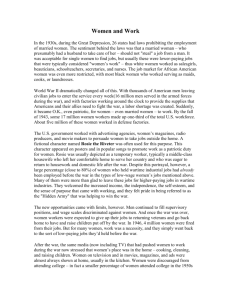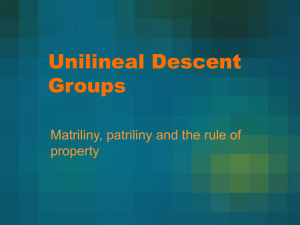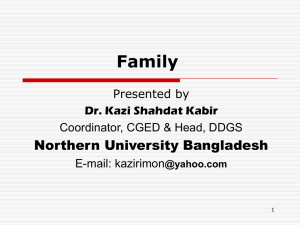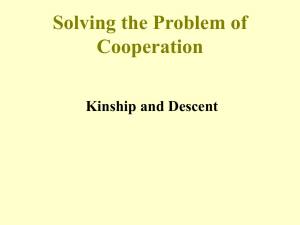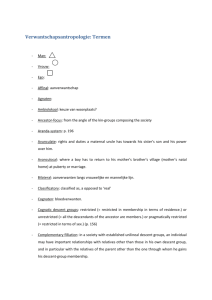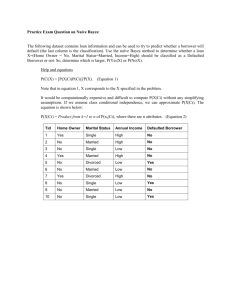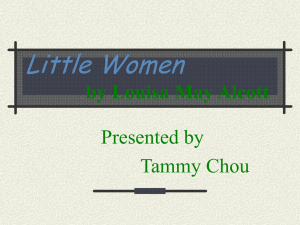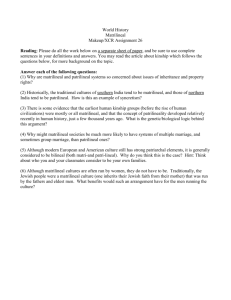Major Social Institutions - The Family
advertisement
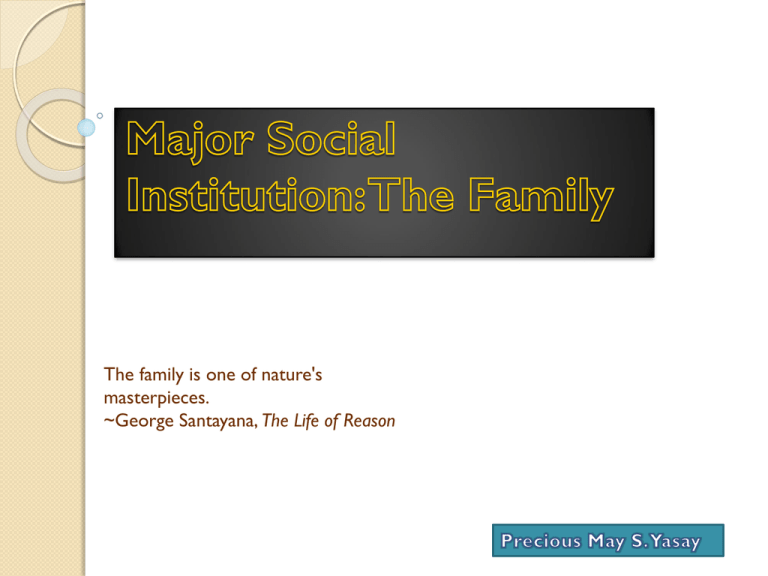
The family is one of nature's masterpieces. ~George Santayana, The Life of Reason There are five major social institutions: The Family Education Religion Economics Government The family is the smallest social institutions with the unique function or producing and rearing the young. The family is closely knit and has strong family ties. The member have the tendency to cling together in there activities and feelings. There is a strong loyalty among them not usually found in Western families. The interest of the individual are often sacrificed for the welfare of the group. 1. 2. 3. 4. 5. 6. Reproduction of the race and rearing of the young. Cultural transmission or enculturation. Socialization of the child. Providing affection and a sense of security. Providing the environment for personality development and the growth of selfconcept in relation to others. Providing social status. Kinds of Family Patterns - Listed below are the different patterns as classified by sociologist: Membership Residence Authority Descent Nuclear Neological Patriarchal Bilineal Extended Matrilocal Matriarchal Patrileneal Patrilocal Equalitarian matrilineal Membership Conjugal or nuclear family – This is the primary or elementary family consisting of husband, wife and children; Consanguine or extended family – It consists of married couple, their parents, siblings, grandparents, uncles, aunts, and cousins. Monogamy and Polygamy. 3 kinds of Polygamy: Polyandry – woman is married to two or more men at the same time; Polygamy – where one man is married to two or more women at the same time; Cenogamy – two or more men mate with two or more women in group marriage. Descent Patrilineal, Matrilineal or Bilineal Patrilineal – when the descent is recognized through the father’s line. Matrilineal – when the descent is recognized through the mother’s line. Bilineal – when the descent is both recognized through mother and father. Residence Patrilocal – when the newly married couple lives with parents of the husband. Matrilocal – when the newly married couple lives with the parents of the wife; and Neolocal – when the newly married pair maintains a separate household and live by themselves. Authority Patriarchal – when the father is considered the head and plays a dominant role; Matriarchal – when the mother or female is the head and makes the major decisions; and Equalitarian – when both father and mother share in making decisions and are equal in authority. Bibliography Book: Social Dimensions of Education ( Revised Edition, 2011)
